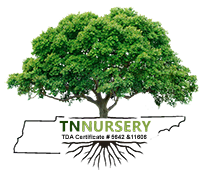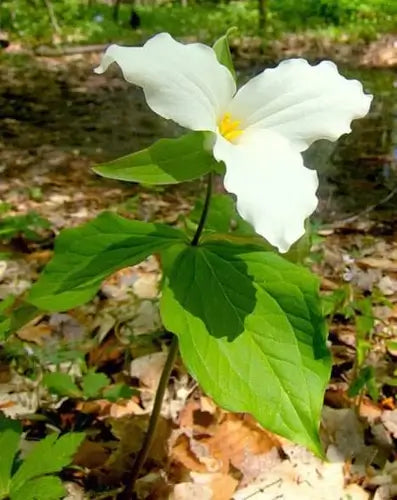The sassafras tree is native to North America and East Asia. This deciduous tree often grows naturally in the woods and open fields. A mature sassafras tree can reach between 20 to 60 feet in height or more and 25 to 40 feet in width. Regarding soil requirements, the sassafras tree can grow in various soils. However, it grows best in acidic soil that is sandy and well-drained.
The sassafras tree can grow in hardiness zones 4 to 9 and is considered resistant to drought. The growth rate is considered medium to fast-growing, with trees growing between 13 inches to 24 inches or more within a year. Some plants have grown over 15 feet in 4 years. In terms of lighting requirements, the sassafras tree grows best in full sun to partial shade, with at least 4 hours of direct sunlight. With the ideal growing environment, the sassafras tree can survive over 1,000 years in the wild.
Sassafras plant
In the spring, the sassafras tree blooms with clusters of yellow flowers. These yellow flowers are 1 to 2 inches long and can be up to a half-inch in diameter. After a few days, the flowers are replaced by bright green leaves. The leaves can grow to be 3 to 7 inches long at full maturity. A sassafras tree produces three types of leaves simultaneously. It produces oval-shaped leaves, three-lobe leaves, as well as mitten-shaped leaves.
It should be noted that the mitten-shaped leaves can be either left or right-handed. The edges of the leaves are smooth. The leaves turn a spectrum of colors in the fall, including yellow, orange, scarlet, and sometimes purple. It also may acquire half-inch dark blue fruit in the fall. The whole leaves form a light-blocking canopy. The bark of the sassafras tree is green and smooth when it is young and may become more orange or brown as it ages. It’s important to note that the plant can be trained as a single trunk tree or a bushy thicket. When it is young, the sassafras tree generally has a shrub with a central trunk and smaller saplings surrounding it. As the plant matures, it will form a defined tree shape with one distinct trunk. The tree forms wide, with a flat top.
Add character with the Sassafras tree
It should also be noted that sassafras trees are also known for their fragrant smell, similar to root beer. While this odor is mild in the spring when the flowers bloom, it becomes more prominent throughout summer. Regarding landscaping uses, sassafras can be considered ornamental trees and shade trees.
Sassafras trees are commonly used on the ornamental side for their spectrum of fall colors and unique appearance. They are also frequently used for the aroma they introduce to a garden or yard. The sassafras tree can also be used as a shade tree in a backyard. However, it should be planted 20 feet away from houses and buildings, as the tree tends to grow wide and tall if trained to grow as a single-trunk tree.
These backyard trees are commonly used for shade and can be placed near entertainment or outdoor seating areas. In addition, sassafras trees are often planted to attract wildlife. Animals such as deer enjoy eating the leaves and branches of the tree. Birds such as turkeys, quail, woodpeckers, and squirrels are attracted to the plant's fruit in the fall. Rabbits also enjoy the bark of the tree. Sassafras trees are also commonly used in parks or public areas for shade.



























































 " alt="Featured Collection Perennials " />
" alt="Featured Collection Perennials " />
 " alt="Featured Collection Ferns " />
" alt="Featured Collection Ferns " />
 " alt="Featured Collection Live Moss " />
" alt="Featured Collection Live Moss " />
 " alt="Featured Collection Trees " />
" alt="Featured Collection Trees " />
 " alt="Featured Collection Shrubs " />
" alt="Featured Collection Shrubs " />
 " alt="Featured Collection Vines " />
" alt="Featured Collection Vines " />
